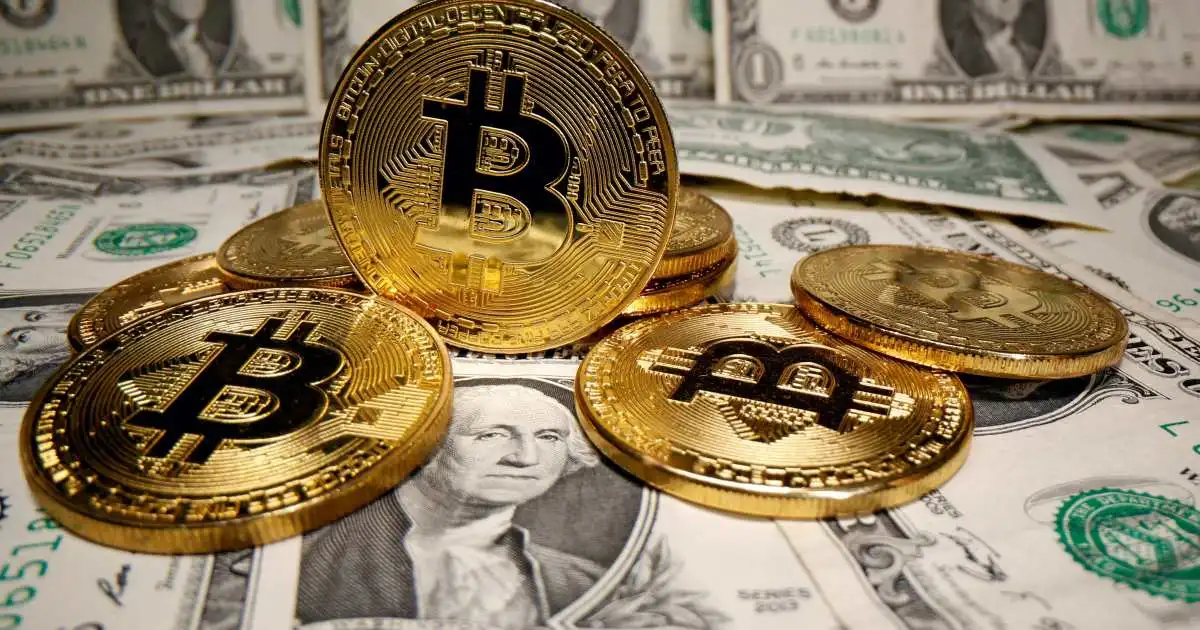Could Stablecoins Strengthen the US Dollar and Challenge Bitcoin’s Dominance?
12.12.2024 10:30 1 min. read Alexander Stefanov
A recent analysis by Citi experts suggests that while stablecoins are reinforcing the dominance of the US dollar, they are also challenging the idea that Bitcoin could eventually dethrone the dollar as the global reserve currency.
Citi’s report points out that cryptocurrencies like Bitcoin were initially seen as alternatives to central bank-issued money, with some even speculating that Bitcoin could end the US dollar’s reign. However, the rise of stablecoins, which now make up the majority of cryptocurrency trading, is challenging this assumption.
The majority of stablecoins are tied to the US dollar, with their issuers maintaining reserves in US dollars and US Treasury bonds. Citi argues that as stablecoins gain more regulatory clarity and legitimacy, they could further cement the dollar’s global standing rather than replacing it.
According to the analysts, as regulations surrounding stablecoins become clearer, the demand for US Treasury bonds by stablecoin issuers may increase significantly. In fact, they suggest that stablecoins could make the US dollar even more accessible internationally, enhancing its dominance in the global economy.
The report also notes that stablecoin usage is expected to hit unprecedented levels in early 2024, with a projected $5.5 trillion in transactions—surpassing Visa’s $3.9 trillion for the same period.
-
1
Bitcoin at Risk of Deeper Pullback as Momentum Stalls, Analyst Says
07.06.2025 12:00 1 min. read -
2
Are We Witnessing the Final Bitcoin Cycle as We Know It?
07.06.2025 16:00 2 min. read -
3
UK Gold Miner Ditches the Precious Metal for Bitcoin, Shares Jump 40%
06.06.2025 14:00 1 min. read -
4
Strategy Aims for $1B Raise with New Stride Shares to Fuel Bitcoin Buys
07.06.2025 8:00 2 min. read -
5
Over 7 Million Bitcoins May Be Lost Forever, Study Finds
07.06.2025 10:00 1 min. read
Bitcoin Hashrate Declines 3.5%, But Miners Hold Firm Amid Market Weakness
Bitcoin’s network hashrate has fallen 3.5% since mid-June, marking the sharpest decline in computing power since July 2024.
Bitcoin Surpasses Alphabet (Google) to Become 6th Most Valuable Asset Globally
Bitcoin has officially overtaken Alphabet (Google’s parent company) in global asset rankings, becoming the sixth most valuable asset in the world, according to the latest real-time market data.
Is Bitcoin a Missed Opportunity? This Billionaire Begins to Wonder
Philippe Laffont, the billionaire behind Coatue Management, is beginning to question his stance on Bitcoin.
Robert Kiyosaki Says Crypto Is Key to Building Wealth in a Failing System
Personal finance author Robert Kiyosaki is urging investors to rethink their approach to money as digital assets reshape the economic landscape.
-
1
Bitcoin at Risk of Deeper Pullback as Momentum Stalls, Analyst Says
07.06.2025 12:00 1 min. read -
2
Are We Witnessing the Final Bitcoin Cycle as We Know It?
07.06.2025 16:00 2 min. read -
3
UK Gold Miner Ditches the Precious Metal for Bitcoin, Shares Jump 40%
06.06.2025 14:00 1 min. read -
4
Strategy Aims for $1B Raise with New Stride Shares to Fuel Bitcoin Buys
07.06.2025 8:00 2 min. read -
5
Over 7 Million Bitcoins May Be Lost Forever, Study Finds
07.06.2025 10:00 1 min. read


